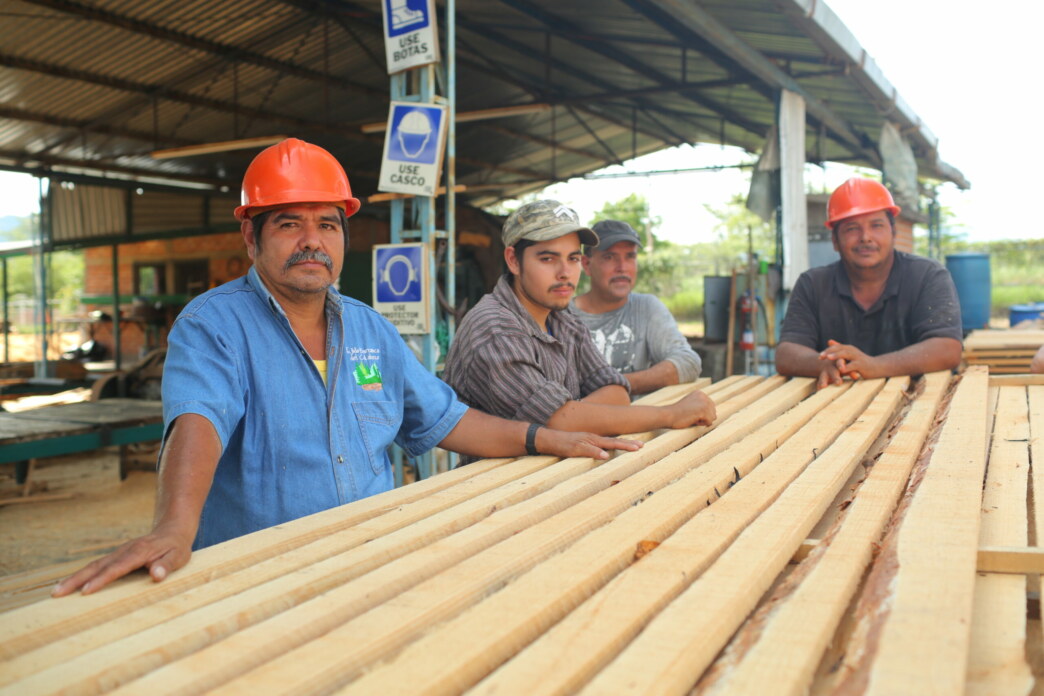Demonstrating the Bankability of Community Forest Enterprises in Mexico Through Climate Investment Funds’ Forest Investment Program (FIP)
Demonstrating the Bankability of Community Forest Enterprises in Mexico Through Climate Investment Funds’ Forest Investment Program (FIP)
Project Overall Goal
The transformation that the GoM sought to achieve, with the support of the FIP investment plan, of which these two projects were a part, was a reduction in GHG emissions from deforestation and forest degradation, the enhancement of forest carbon stocks, and the promotion of sustainable rural development, along with a reduction in the levels of poverty and biodiversity loss.
Executive Summary
Mexico’s forests are an important contributor to the national economy, in terms of their provision of raw materials for productive sectors and rural livelihoods as well as the delivery of critical ecosystem services. The Government of Mexico, working with its development partners, including the World Bank and Inter-American Development Bank (IDB), has focused on strengthening and consolidating community forestry efforts. This emphasis on the community forestry approach is a key element of the country’s conservation, social development, and poverty reduction strategies in forest areas.
CIF, through its Forest Investment Program (FIP), prepared a strategic investment plan to address the drivers of deforestation and forest degradation in the country with plan activities carried out between 2011 and 2020 by national and international stakeholders. Of the two major change pathways identified, one involved working in alliance with technical intermediaries and supporting value chain development for delivering transformations within the context of smaller-scale investments in climate goods and services. Recognizing the role that forests play for rural communities, much attention was focused on supporting community forest enterprises (CFEs) and was advanced through the two projects implemented by IDB. These focused on creating and piloting innovative financing mechanisms, as well as improving access to finance for ejidos (a land tenure system that is based on collective ownership and governance, with shared areas of land dedicated to productive activities and managed communally by its members), and micro-, small-, and medium-scale enterprises (MSMEs). This was done with grants and concessional loans channeled through local financial intermediaries to support community forest enterprises in the creation of financially and environmentally sustainable businesses in forest landscapes.
A key aim of FIP’s concessional finance and the use of grants for technical assistance and proving risk reduction mechanisms was to provide access to finance and lower the overall risk for the participating financial intermediaries. This facilitated the financial inclusion of ejidos and communities, thus helping to strengthen their entrepreneurial culture, while supporting the establishment of the forest sector as a viable economic opportunity among other “competing” sectors.
The FIP financial models were tailored to the particular needs of the forestry sector and catered to the conditions of each CFE. Through both projects, the work of IDB served to improve perceptions around the viability of providing credit finance to CFEs. IDB’s financial intermediaries, FND and FINDECA, achieved nearly 100 percent repayment rates on the loans they provided. While FIP projects sought to advance productive forest landscapes and generate income for CFEs, communities, and ejidos, sustainable land management remained at the core of FIP’s approach. The financial intermediation model was thus critical in mitigating risks, which attracted increased investments in the forestry sector and supported projects led by ejidos and communities in becoming bankable and economically feasible.
The success of FIP’s financial intermediation model that delivered specific credit products, has been partly responsible for a shift in thinking towards the feasibility and capacity of small-scale forest enterprises to access private credit as opposed to a mainly state-led, subsidy-driven financial offer. It yielded positive results that generated a demonstration effect, in terms of how access to finance can be increased for the CFEs and community businesses through adequate models that catered to their needs.
Concessional finance and capacity building support have proven to be a catalyst for systemic change in the rural economy by reducing financial risks and creating a more attractive commercial risk-return profile for investments in forest-related enterprises. This de-risking of finance has enabled intermediaries to extend credit to micro-, small-, and medium-scale sustainable forestry enterprises and has proven the commercial viability of doing so. Through successful demonstrations of the financial intermediation model, FIP projects in Mexico accelerated a shift in thinking around gender mainstreaming and the commercial viability of CFEs, thus creating a window of opportunity for future scaling. It also showcased how doing so can positively impact vulnerable forest-based households by providing them with income and livelihood options, while stimulating broader rural economies and conserving forests.






